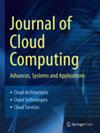A deep reinforcement learning assisted task offloading and resource allocation approach towards self-driving object detection
IF 3.7
3区 计算机科学
Q2 COMPUTER SCIENCE, INFORMATION SYSTEMS
Journal of Cloud Computing-Advances Systems and Applications
Pub Date : 2023-09-12
DOI:10.1186/s13677-023-00503-w
引用次数: 0
Abstract
Abstract With the development of communication technology and mobile edge computing (MEC), self-driving has received more and more research interests. However, most object detection tasks for self-driving vehicles are still performed at vehicle terminals, which often requires a trade-off between detection accuracy and speed. To achieve efficient object detection without sacrificing accuracy, we propose an end–edge collaboration object detection approach based on Deep Reinforcement Learning (DRL) with a task prioritization mechanism. We use a time utility function to measure the efficiency of object detection task and aim to provide an online approach to maximize the average sum of the time utilities in all slots. Since this is an NP-hard mixed-integer nonlinear programming (MINLP) problem, we propose an online approach for task offloading and resource allocation based on Deep Reinforcement learning and Piecewise Linearization (DRPL). A deep neural network (DNN) is implemented as a flexible solution for learning offloading strategies based on road traffic conditions and wireless network environment, which can significantly reduce computational complexity. In addition, to accelerate DRPL network convergence, DNN outputs are grouped by in-vehicle cameras to form offloading strategies via permutation. Numerical results show that the DRPL scheme is at least 10% more effective and superior in terms of time utility compared to several representative offloading schemes for various vehicle local computing resource scenarios.一种深度强化学习辅助任务卸载和资源分配的自动驾驶目标检测方法
随着通信技术和移动边缘计算(MEC)的发展,自动驾驶受到越来越多的研究兴趣。然而,大多数自动驾驶车辆的目标检测任务仍然在车载终端执行,这通常需要在检测精度和速度之间进行权衡。为了在不牺牲精度的情况下实现高效的目标检测,我们提出了一种基于深度强化学习(DRL)的端到端协作目标检测方法,该方法具有任务优先级机制。我们使用时间效用函数来衡量目标检测任务的效率,旨在提供一种在线方法来最大化所有时段的时间效用的平均总和。由于这是一个NP-hard混合整数非线性规划(MINLP)问题,我们提出了一种基于深度强化学习和分段线性化(DRPL)的在线任务卸载和资源分配方法。深度神经网络(deep neural network, DNN)是一种基于道路交通状况和无线网络环境的学习卸载策略的灵活解决方案,可以显著降低计算复杂度。此外,为了加速DRPL网络的收敛,DNN输出被车载摄像头分组,通过排列形成卸载策略。数值结果表明,在各种车辆局部计算资源场景下,与几种具有代表性的卸载方案相比,DRPL方案的效率和时间利用率至少提高了10%。
本文章由计算机程序翻译,如有差异,请以英文原文为准。
求助全文
约1分钟内获得全文
求助全文
来源期刊

Journal of Cloud Computing-Advances Systems and Applications
Computer Science-Computer Networks and Communications
CiteScore
6.80
自引率
7.50%
发文量
76
审稿时长
75 days
期刊介绍:
The Journal of Cloud Computing: Advances, Systems and Applications (JoCCASA) will publish research articles on all aspects of Cloud Computing. Principally, articles will address topics that are core to Cloud Computing, focusing on the Cloud applications, the Cloud systems, and the advances that will lead to the Clouds of the future. Comprehensive review and survey articles that offer up new insights, and lay the foundations for further exploratory and experimental work, are also relevant.
 求助内容:
求助内容: 应助结果提醒方式:
应助结果提醒方式:


